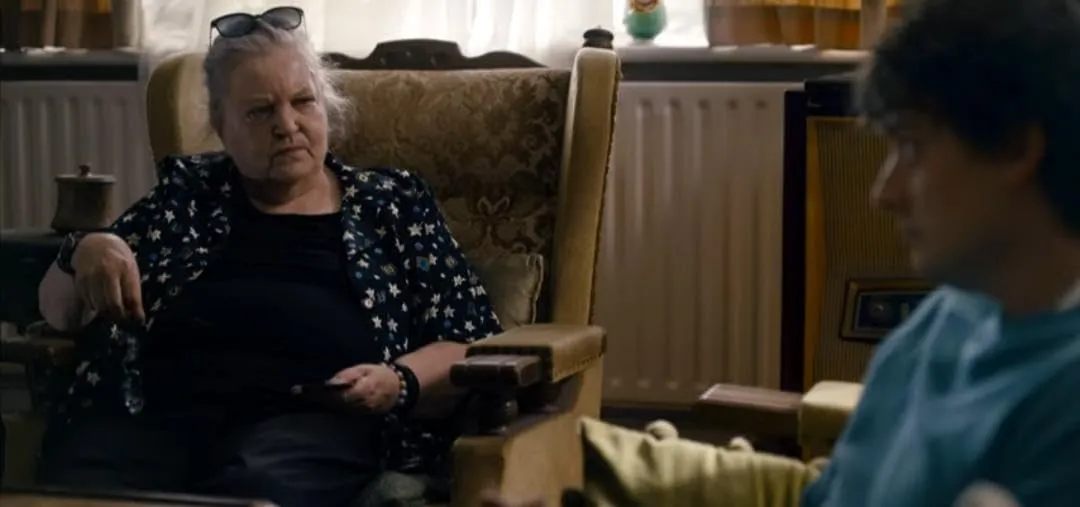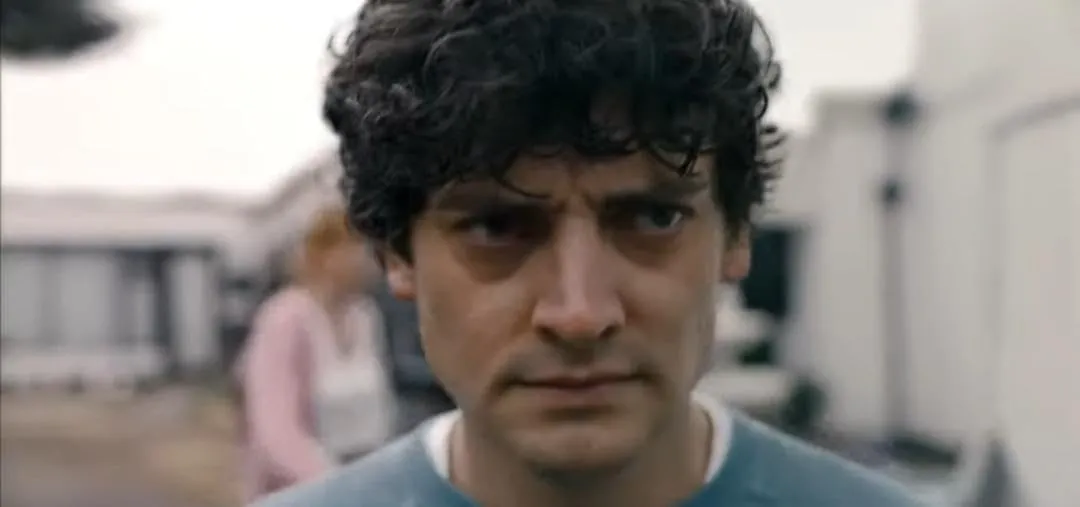In “The Catch,” Ed Collier, portrayed by Jason Watkins, emerges as a fisherman wrestling with his son Josh’s tragic death. This loss colors his perception of the world, especially regarding his daughter Abbie’s new boyfriend, Ryan. Despite Ryan appearing perfect — attractive, friendly, and seemingly successful — Ed’s gut feeling creates immediate tension, reflecting parental concerns that strike a chord with viewers.
The story unfolds with Ed’s growing unease, fueled by an intense desire to shield Abbie from potential dangers. The narrative explores emotional dynamics within family relationships, revealing the hidden struggles fathers experience. This portrayal challenges traditional depictions of masculinity, presenting a father consumed by fear and grief.
The series explores mental health and societal expectations subtly. By positioning Ed in morally complex situations, the storyline encourages viewers to examine their understanding of parental protection and personal trauma. “The Catch” weaves suspense with nuanced character exploration, inviting audiences to reflect on grief and trust through a deeply personal lens.
Character Dynamics in “The Catch”: A Study in Grief and Suspicion
Ed Collier emerges as a complex character in “The Catch,” portrayed by Jason Watkins with nuanced depth. He represents a father grappling with profound loss, his emotional landscape shaped by the death of his son Josh.
His interactions with daughter Abbie and her boyfriend Ryan reveal a man torn between protective instincts and deep-seated vulnerabilities. This portrayal breaks traditional male character representations, showing emotional complexity that challenges typical gender expectations.
Abbie stands in stark contrast to her father, representing a generation seeking personal freedom. Her relationship with Ryan unfolds against a backdrop of familial tension, highlighting generational conflicts and individual agency. She navigates her father’s protective impulses while asserting her own path, embodying contemporary discussions about young women’s independence.
Ryan remains an enigmatic figure, his character blurring lines between potential threat and misunderstood outsider. His mysterious background creates narrative tension, compelling viewers to question his true intentions and motivations. Each revelation about his past adds layers of complexity to the unfolding drama.
Phyllis, Ed’s mother-in-law experiencing dementia, adds another dimension to the family’s emotional terrain. Her presence underscores familial challenges and the impact of aging, providing subtle commentary on care, connection, and human resilience.
The narrative weaves these characters’ experiences into a rich tapestry that explores grief, trust, and personal transformation. Through their interconnected stories, “The Catch” presents a raw examination of human relationships and emotional survival.
Themes of Grief and Trust in “The Catch”: A Reflection of Contemporary Struggles
“The Catch” explores grief and loss through Ed Collier, a father wrestling with unresolved trauma that shapes his interactions and decisions. The series reveals how the memory of his deceased son influences his intense protectiveness toward his daughter, Abbie. Ed’s deep suspicion of her boyfriend, Ryan, goes beyond typical narrative tropes, instead examining how grief can warp perceptions of love and safety.
The narrative weaves tension around trust and secrets that challenge familial connections. Ed’s struggle to accept Ryan’s relationship with Abbie prompts viewers to consider the complex dynamics of doubt and connection. The story reveals how betrayal can emerge within family structures, exposing the delicate nature of relationships between parents and children.
The portrayal of Ed and Abbie’s relationship highlights generational differences in parental dynamics. Ed’s protective instincts clash with Abbie’s desire for independence, creating a compelling snapshot of contemporary family interactions. Her determination to establish her own path challenges traditional notions of parental control and personal agency.
Through these character explorations, “The Catch” offers a raw examination of emotional landscapes, inviting viewers to reflect on personal experiences of loss, trust, and familial bonds.
The Significance of Place: Setting in “The Catch”
The coastal town in “The Catch” emerges as a powerful narrative element, deeply intertwined with the characters’ emotional landscapes. Ed Collier’s inner turmoil finds its reflection in the rugged shoreline and unpredictable waters. This environment creates a stark sense of seclusion, both physical and emotional, as Ed grapples with his son’s death.
The fishing community, weathered by economic challenges, provides a rich backdrop to Ed’s personal struggles. Declining industries and financial pressures echo the character’s internal conflicts, creating a nuanced portrayal of survival and resilience.
Cinematographic choices amplify the story’s intensity. Sweeping shots of the coastline capture the raw beauty and danger inherent in this remote world. Rain-drenched streets and turbulent seas visually communicate the underlying tension, connecting the environment directly to Ed’s psychological state.
The series explores how geographical spaces shape human experiences. Relationships between characters unfold against a landscape that is simultaneously beautiful and threatening, with the coastal setting acting as a silent witness to personal drama and societal shifts.
Ed and Abbie’s complex dynamic plays out within this charged environment, where isolation breeds mistrust and protective instincts clash with desires for independence. The town becomes more than a location—it transforms into a character that speaks volumes about human resilience, economic change, and personal transformation.
Performance and Acting in “The Catch”: A Study of Nuanced Reactivity
Jason Watkins delivers a gripping performance as Ed Collier, a father whose grief shapes the narrative’s emotional landscape. Watkins explores his character with depth, balancing vulnerability and protective instincts. His portrayal reveals the weight of Ed’s trauma, where each moment communicates profound loss.
The performance connects with current mental health discussions, showing how grief emerges through subtle and dramatic expressions. Watkins moves between tender and suspicious states, creating a compelling character study that challenges traditional depictions of emotional masculinity.
Brenda Fricker plays Phyllis, Ed’s mother-in-law, providing a subtle counterpoint to the family’s intense drama. Her portrayal of a woman experiencing dementia captures both confusion and unexpected lucidity. Fricker brings humor and depth to her role, revealing the complex emotional dynamics within the family unit.
Poppy Gilbert portrays Abbie with sharp insight, depicting a young woman navigating familial expectations and personal freedom. Her character represents generational shifts in female autonomy, challenging traditional family structures.
Aneurin Barnard’s Ryan emerges as a compelling enigma, shifting between charm and uncertainty. His performance creates tension, keeping viewers guessing about his true intentions and adding layers to the story’s interpersonal dynamics.
The ensemble cast creates a rich tapestry of human experience, exploring relationships with nuance and emotional depth. Their performances transform “The Catch” into a powerful exploration of family, trust, and personal struggle.
Pacing and Structure in “The Catch”: A Tightrope Walk of Tension
“The Catch” uses a four-episode format that reveals storytelling’s strengths and limitations. The condensed structure allows the narrative to unfold with precision, supporting character growth and thematic depth without unnecessary digressions.
Each episode moves the story forward, intertwining suspense and escalating Ed’s psychological tension. The rhythm skillfully merges character moments with increasing dramatic pressure, keeping viewers connected as events intensify.
The series succeeds through strategic engagement, linking dramatic revelations to character trajectories. Cliffhangers strategically grip audience attention, creating anticipation for subsequent episodes. This approach reflects current viewing preferences that prioritize sustained viewer interest.
The episodic approach creates interesting narrative dynamics. While generating suspense, it risks developing a repetitive pattern. “The Catch” counters this by introducing unexpected turns and misleading elements that maintain viewer curiosity, reflecting emerging storytelling techniques in contemporary entertainment platforms.
The series explores narrative construction through its strategic storytelling, presenting a nuanced examination of how modern television communicates complex psychological experiences.
Cinematography and Direction in “The Catch”: Crafting Atmosphere and Tension
In “The Catch,” visual storytelling plays a significant role in amplifying the series’ emotional landscape. The cinematography blends coastal vistas with intimate close-ups, creating a stark contrast between the sea’s expansiveness and the characters’ inner isolation.
Shots of turbulent waters subtly reflect Ed’s internal conflict, communicating psychological tension without explicit dialogue. Natural light filtered through coastal fog creates an atmosphere that shifts between serene and unsettling, drawing viewers into the characters’ emotional world.
Direction in “The Catch” supports its visual approach with strategic suspense construction. The narrative unfolds through carefully paced scenes that alternate between tense moments and reflective sequences. This method allows viewers to explore Ed’s interactions and experience gradual emotional escalation. Such storytelling technique prioritizes subtle character exploration over explicit exposition.
The director’s focus on understated gestures and unspoken dynamics creates a narrative space that feels simultaneously confined and expansive. “The Catch” represents an emerging approach to visual storytelling that merges cinematic poetry with narrative intensity, exploring complex emotional landscapes through nuanced visual language.
The Review
The Catch
In "The Catch," strong performances by Jason Watkins and Brenda Fricker, coupled with a gripping narrative, craft an engaging viewing experience. The series leverages its coastal setting to heighten emotional tensions while subverting typical storytelling patterns through a concise four-episode structure. While moments of predictability emerge, the show's nuanced examination of family relationships and psychological struggles strikes a profound chord. "The Catch" delivers a poignant story that interweaves suspense with rich character exploration.
PROS
- Strong performances, particularly from Jason Watkins and Brenda Fricker.
- Engaging narrative that blends themes of grief, trust, and parental dynamics.
- Effective use of a coastal setting to enhance mood and tension.
CONS
- Occasional predictability in character motivations and plot developments.
- Some emotional beats may feel rushed due to the limited episode count.
- Potential reliance on familiar thriller tropes.





















































